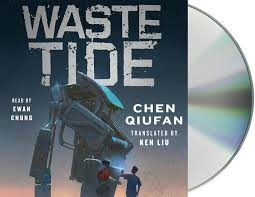Analysis of Populist Threats to Global Trade: The Trump-Farage Phenomenon
The Global Populist Resurgence
Common Characteristics
- Economic Nationalism: “America First,” “Brexit” and similar slogans prioritise national economic interests over international cooperation
- Anti-Globalisation Stance: Rejection of multilateral trade frameworks in favour of bilateral deals where size provides leverage
- Voter Base: Support concentrated among those who perceive themselves as “losers” from globalisation
- Messaging Strategy: Simple, direct solutions to complex economic problems resonate with voters who feel left behind
Key Populist Leaders Affecting Trade
- Donald Trump: Re-elected US president, promoting tariffs and bilateral deal-making
- Nigel Farage: Rising British political force continuing to reshape UK’s trade relationships
- Marine Le Pen: Growing influence in France with protectionist economic policies
- Viktor Orbán: Hungary’s leader challenging EU economic consensus
Impact on Global Trade Architecture
Multilateral System Erosion
- WTO Weakening: Populist leaders often bypass or undermine WTO dispute mechanisms
- Regional Trade Bloc Fragmentation: Brexit exemplifies the challenge to regional integration
- Declining Consensus: Harder to reach new international trade agreements as protectionism grows
- From Rules-Based to Power-Based: Shift from agreed global standards to leverage-based negotiations
Specific Trade Policy Changes
- Tariff Increases: Used as both negotiation tools and permanent protectionist measures
- Non-Tariff Barriers: Rise in regulatory obstacles under “national security” or “sovereignty” justifications
- Bilateral Focus: Preference for one-on-one negotiations where economic size creates an advantage
- Supply Chain Restructuring: “Friend-shoring” and “near-shoring” replacing efficiency-based global supply chains
Economic Consequences
Short-Term Effects
- Trade Volume Reduction: Initial contraction in global trade as barriers increase
- Price Inflation: Import tariffs and supply chain disruptions raising consumer prices
- Market Volatility: Unpredictable policy changes creating investment uncertainty
- Sectoral Winners and Losers: Certain protected industries benefiting while others face retaliation
Long-Term Systemic Changes
- Supply Chain Regionalization: Movement away from global to regional production networks
- Innovation Impact: Potential slowing of knowledge transfer that accompanies trade
- Industrial Policy Revival: Government intervention becoming more acceptable across political spectrum
- Trade Relationship Politicization: Commercial decisions increasingly influenced by political alignment
The Trump-Farage Connection
Policy Parallels
- Both leverage immigration concerns to justify economic protectionism
- Both focus on manufacturing revival through trade barriers
- Both prefer bilateral negotiations to multilateral frameworks
- Both reject economic expert consensus on free trade benefits
Divergent Approaches
- Trump: Leverages US economic size for maximum pressure on trading partners
- Farage: Positions UK as “Global Britain” while paradoxically restricting European trade
- Trump: Explicitly confrontational approach to China and trade rivals
- Farage: More nuanced position on China, focusing primarily on European decoupling
Countries Most Vulnerable
Economic Profile of Vulnerable Nations
- Export-dependent economies with limited domestic markets
- Nations with narrow export bases concentrated in few industries
- Countries heavily integrated in global supply chains
- Small and medium economies lacking negotiating leverage
Specific Vulnerable Regions
- Southeast Asian Export Economies: Malaysia, Vietnam, Singapore
- Trade-Dependent European Nations: Netherlands, Belgium, Czech Republic
- North American Supply Chain Partners: Mexico, Canada
- Raw Material Exporters: Chile, Australia, Brazil
Potential Future Scenarios
Scenario 1: Accelerated Deglobalization
- Rapid increase in tariffs and trade barriers
- Collapse of remaining multilateral trade negotiations
- Formation of competing trade blocs aligned with geopolitical structures
- Significant global GDP reduction as efficiency gains are reversed
Scenario 2: Adaptive Reconfiguration
- Strategic sectors protected while maintaining open trade in other areas
- Regional trade agreements replacing global frameworks
- Parallel trading systems emerging with different rules and standards
- Moderate economic impact as businesses adapt to new realities
Scenario 3: Populist Retreat
- Popular backlash against price increases and economic disruption
- Return to multilateral cooperation with reformed institutions
- More inclusive trade policies addressing inequality concerns
- Renewed but modified globalisation with a greater emphasis on resilience
Strategic Responses for Businesses and Nations
For Vulnerable Export Economies
- Diversify export markets to reduce dependency on any single destination
- Develop domestic and regional markets to balance export reliance
- Build redundancy in supply chains to manage disruption
- Form strategic alliances with like-minded trading partners
For Multinational Businesses
- Reconfigure supply chains to accommodate political realities
- Increase operational flexibility to pivot between markets
- Engage in scenario planning for potential trade disruptions
- Balance efficiency against resilience in operational decisions
For International Institutions
- Reform multilateral frameworks to address legitimate populist concerns
- Increase transparency and accountability in trade governance
- Develop mechanisms to better distribute trade benefits
- Create more flexible rules to accommodate differing economic development levels
The rise of figures like Trump and Farage represents a significant shift in the global trade landscape from internationalism toward economic nationalism. While complete deglobalization remains unlikely, we are witnessing a fundamental restructuring of trade relationships that will require adaptive strategies from all economic actors. The challenge will be finding a new balance that addresses genuine concerns about the distributional effects of trade while preserving the substantial benefits of international economic integration.
Addressing Populist Trade Challenges: Diplomatic, Supply Chain, and Labour Solutions
Diplomatic Resolutions
Reforming Multilateral Institutions
- Inclusive Governance Reform: Restructure WTO, IMF, and World Bank voting rights to better reflect current economic realities
- Transparency Initiatives: Implement public monitoring systems for trade negotiation processes to address perceptions of elite deal-making
- Dispute Resolution Overhaul: Create faster, more accessible trade dispute mechanisms that smaller nations can effectively utilise
- Sovereignty Preservation Clauses: Design trade agreements with explicit protections for national regulatory autonomy on labour, environment, and health
Building Resilient Bilateral Relations
- Depoliticised Trade Channels: Establish institutional frameworks that maintain trade cooperation even during political tensions
- Early Warning Mechanisms: Create joint committees to identify and address trade frictions before they escalate
- Sectoral Cooperation Agreements: Develop industry-specific agreements that can survive broader political disagreements
- Sub-National Diplomacy: Foster direct relationships between regions/states/provinces to bypass national political volatility
Public Diplomacy Strategies
- Benefits Visualisation: Develop clear metrics and communication tools showing trade benefits to average citizens
- Local Success Stories: Highlight specific communities that have successfully adapted to and benefited from global trade
- Stakeholder Inclusion: Involve labor unions, environmental groups, and consumer advocates in trade discussions from the outset
- Digital Engagement: Create interactive digital platforms explaining trade agreements and allowing public comment
Diplomatic Hedging Approaches
- Multi-Track Negotiations: Pursue parallel bilateral, regional, and multilateral agreements to create redundancy
- Sectoral Prioritisation: Identify and safeguard critical economic sectors through targeted diplomatic arrangements
- Technical Cooperation Focus: Maintain technical and regulatory cooperation even when high-level political relations deteriorate
- Trade Defence Coalitions: Form alliances of similarly affected nations to collectively respond to unilateral trade measures
Supply Chain Resolutions
Network Resilience Strategies
- Strategic Redundancy: Develop parallel supply pathways for critical components and materials
- Geographic Diversification: Balance cost efficiency with political risk by sourcing from multiple regional hubs
- Inventory Policy Recalibration: Move from pure just-in-time to strategic buffer inventories for essential inputs
- Tier-N Supplier Mapping: Extend visibility beyond immediate suppliers to understand deep supply chain vulnerabilities
Supply Chain Transparency
- Blockchain Implementation: Deploy distributed ledger technology to create immutable supply chain records
- Public Traceability Systems: Develop consumer-facing platforms showing product origins and manufacturing conditions
- Supply Chain Rating Frameworks: Create standardized metrics for supply chain resilience and sustainability
- Regulatory Cooperation: Harmonise supply chain reporting requirements across major markets
Nearshoring and Friendshoring Initiatives
- Regional Manufacturing Hubs: Develop specialized production clusters in politically aligned regions
- Strategic Co-Investment: Create public-private partnerships to fund supply chain relocations for critical industries
- Graduated Localization: Identify components requiring proximity versus those where global sourcing remains optimal
- Alternative Trade Routes: Develop secondary logistics corridors avoiding geopolitically sensitive chokepoints
Technology-Enabled Adaptation
- Digital Twins: Create virtual supply chain models to simulate disruption scenarios and test responses
- AI-Powered Forecasting: Deploy advanced analytics to anticipate supply chain vulnerabilities and political risks
- Automated Reconfiguration: Implement systems that can rapidly shift production and logistics when disruptions occur
- 3D Printing Networks: Establish distributed manufacturing capabilities to produce components locally during disruptions
Labor Market Resolutions
Worker Transition Programs
- Targeted Skills Development: Create industry-specific retraining programs based on regional economic forecasting
- Wage Insurance: Implement programs guaranteeing percentage of previous wages during career transitions
- Geographic Mobility Assistance: Provide relocation support for workers moving to areas with labor demand
- Mid-Career Apprenticeships: Develop paid learning opportunities specifically designed for experienced workers
Local Economic Revitalization
- Place-Based Investment Incentives: Create enhanced benefits for companies investing in trade-affected communities
- Regional Innovation Hubs: Establish specialized economic zones aligned with local industrial heritage and capabilities
- Infrastructure Modernization: Prioritize transportation and digital infrastructure in affected regions to attract new industries
- Small Business Export Programs: Develop targeted support helping local businesses access international markets
Labor Voice in Trade Policy
- Trade Impact Assessments: Require detailed analysis of employment effects before trade agreement implementation
- Sectoral Labor Councils: Establish industry-specific forums where workers help shape adaptation strategies
- Labor Standards Enforcement: Create robust mechanisms to ensure trading partners uphold worker protections
- Trade Adjustment Assistance Reform: Overhaul support programs for displaced workers with higher benefits and longer duration
Global Labour Cooperation
- International Skills Recognition: Develop cross-border certification systems facilitating worker mobility
- Labour Rights Harmonisation: Work toward convergence of core labour standards across trading partners
- Global Union Alliances: Support transnational labour cooperation to prevent standards arbitrage
- Worker Exchange Programs: Create opportunities for cross-border skill sharing and solidarity building
Integrated Policy Frameworks
Trade Agreement Modernisation
- Labor and Environmental Chapters: Move these from side agreements to core treaty text with enforcement mechanisms
- SME-Specific Provisions: Include dedicated support for small and medium enterprises in all trade agreements
- Digital Trade Rules: Develop comprehensive frameworks for e-commerce, data flows, and digital services
- Adjustment Mechanism Funding: Allocate a percentage of increased trade revenue to adaptation programs
Inclusive Growth Policies
- Trade Benefit Distribution: Design tax and transfer systems ensuring trade gains reach all economic segments
- Community Ownership Models: Develop frameworks allowing affected communities to hold equity in new investments
- Public Service Protection: Create explicit safeguards for education, healthcare, and utilities in trade agreements
- Progressive Trade Assistance: Scale adjustment support is inversely proportional to the income/wealth of affected individuals
Governance Innovation
- Multi-Stakeholder Trade Councils: Create permanent forums including business, labour, environmental, and consumer representatives
- Algorithmic Impact Analysis: Require assessment of how AI and automation will affect labour markets in traded sectors
- Regulatory Cooperation Bodies: Establish permanent institutions to progressively align standards while protecting sovereignty
- Sunset and Review Provisions: Include regular assessment points in trade agreements with modification options
Measuring Success Differently
- Beyond GDP Metrics: Adopt broader prosperity measurements, including distribution, sustainability, and well-being
- Local Impact Dashboards: Create community-level monitoring of trade agreement effects
- Quality of Work Indicators: Track job quality, not just quantity, in evaluating trade outcomes
- Intergenerational Equity: Assess trade impacts across generations, not just the immediate term
Implementation Challenges and Solutions
Political Feasibility
- Incremental Approach: Start with less controversial measures to build momentum and trust
- Broad Coalitions: Create unusual alliances (e.g., business-labour partnerships) to support balanced reforms
- Policy Sequencing: Ensure adaptation support is in place before implementing trade liberalisation
- Success Storytelling: Aggressively communicate early wins to build public confidence
Institutional Capacity
- Technical Assistance Programs: Provide support for developing nations to implement complex trade provisions
- Public Administration Reform: Strengthen agencies responsible for trade adjustment and enforcement
- Data Infrastructure: Invest in systems tracking trade flows, supply chains, and employment impacts
- Decentralised Implementation: Empower local governments to customise adaptation strategies
Financing Mechanisms
- Border Adjustment Revenues: Use carbon or social border taxes to fund transition programs
- Financial Transaction Taxes: Apply small levies on international financial flows to support adjustment
- Corporate Benefit Sharing: Require companies gaining from trade to contribute to adjustment funds
- Blended Finance Models: Combine public, private, and philanthropic capital for regional revitalisation
Monitoring and Adaptation
- Early Warning Indicators: Develop metrics identifying communities at risk from trade shifts
- Rapid Response Teams: Create specialised units to address acute trade-related dislocations
- Iterative Policy Design: Build continuous learning and adjustment into all trade-related programs
- Independent Evaluation: Establish an arms-length assessment of trade agreement impacts and resolution effectiveness
The populist challenge to the global trading system reflects genuine failures to ensure that trade benefits are broadly shared and disruptions are adequately addressed. By implementing comprehensive diplomatic, supply chain, and labour market solutions, it is possible to preserve the benefits of international economic integration while addressing the legitimate concerns that have fueled the populist response. The key is recognising that trade policy cannot be separated from domestic economic and social policy—they must be designed and implemented as an integrated system focused on inclusive prosperity.
Digital Economy Solutions to Address Populist Trade Challenges
Digital Infrastructure as Economic Equaliser
Bridging the Digital Divide
- Rural Connectivity Programs: Strategic investment in high-speed internet infrastructure in economically marginalized regions most susceptible to populist messaging
- Digital Skills Initiatives: Large-scale training programs targeting displaced manufacturing workers for transition to digital economy roles
- Community Technology Centres: Public facilities offering access to digital tools and training in trade-affected areas
- Technology Lending Programs: Government-backed initiatives providing hardware access to economically vulnerable populations
Digital Public Goods
- Open Source Platforms: Government-supported development of non-proprietary software for small businesses to access global markets
- Shared Data Infrastructure: Creating public data repositories that level the playing field between large multinationals and smaller local firms
- Digital Identity Systems: Secure, universal digital ID facilitating participation in the formal digital economy for all citizens
- National API Frameworks: Standardised interfaces allowing businesses of all sizes to integrate with digital public infrastructure
E-Commerce as Trade Democratiser
SME Digital Trade Enablement
- Simplified Export Platforms: Single-window digital systems streamlining regulatory compliance for small exporters
- Digital Trade Hubs: Virtual market spaces with built-in logistics, payment, and compliance tools for small businesses
- E-Commerce Incubators: Programs providing technical assistance and initial capital for local businesses to establish online presence
- Cross-Border Payment Solutions: Low-cost, secure transaction systems reducing barriers to international sales for small vendors
Digital Market Access Agreements
- Harmonised Digital Standards: International agreements on interoperable e-commerce regulations and technical standards
- Digital Trade Corridors: Bilateral or regional arrangements for preferential digital market access with simplified compliance
- SME Digital Chapters: Specific provisions in trade agreements addressing digital barriers facing smaller businesses
- Digital Trade Facilitation: Automated customs processing and digital documentation reduce bureaucratic hurdles
Data Governance Solutions
Balanced Data Sovereignty
- Tiered Data Classification: Frameworks distinguishing between data requiring local storage and that which can flow freely
- Trusted Data Partnerships: Bilateral agreements enabling privileged data flows between nations with compatible privacy regimes
- Regulatory Sandboxes: Controlled environments for testing cross-border data innovations before full implementation
- Democratic Data Governance: Inclusive processes ensuring public input on rules governing international data transfers
Digital Trust Infrastructure
- Cross-Border Privacy Frameworks: Compatible personal data protection systems balancing innovation and rights
- Mutual Recognition Mechanisms: Reciprocal acceptance of data protection certifications across borders
- Digital Ethics Guidelines: Internationally agreed principles for AI and algorithmic systems in cross-border contexts
- Cybersecurity Cooperation: Joint response capabilities addressing digital threats to trade infrastructure
Digital Labor Markets
Remote Work Policy Frameworks
- Cross-Border Telework Agreements: Bilateral arrangements clarifying taxation, benefits, and regulatory compliance for remote workers
- Virtual Migration Pathways: Digital work visas allowing participation in foreign labour markets without physical relocation
- Digital Nomad Infrastructure: Specialised visa programs and legal frameworks supporting location-independent professionals
- Labour Standards for Digital Platforms: Establishing baseline rights and protections for platform-based workers across borders
Algorithmic Labour Protection
- Algorithmic Impact Assessments: Mandatory evaluation of how AI-driven management systems affect workers
- Transparency Requirements: Rules ensuring workers understand how digital systems evaluate and assign their work
- Collective Bargaining Frameworks: Updated labour laws enabling organisation among digitally mediated workers
- Portable Benefits Systems: Digital mechanisms attaching social protections to workers rather than employers
Digital Trade Intelligence Systems
Predictive Disruption Monitoring
- AI-Powered Trade Forecasting: Advanced analytics identifying sectors and communities vulnerable to imminent trade shifts
- Digital Skills Mapping: Real-time analysis of regional workforce capabilities versus emerging economic opportunities
- Early Intervention Triggers: Automated systems activate support programs when disruption indicators reach critical thresholds
- Simulation Technologies: Digital twins modelling potential impacts of trade policy changes at the community level
Evidence-Based Policy Tools

- Trade Impact Dashboards: Real-time visualisation of trade flow effects on different economic segments and communities
- Distributed Ledger Trade Data: Blockchain systems create transparent, verifiable records of international transactions
- Sentiment Analysis Systems: AI monitoring of public attitudes toward trade to identify emerging concerns
- Digital Deliberation Platforms: Technology-enabled citizen participation in trade policy development
Digital Financial Inclusion
Cross-Border Financial Technologies
- Central Bank Digital Currencies: Government-backed digital money facilitating lower-cost international transactions
- Trade Finance Platforms: Blockchain-based systems reducing documentation costs and expanding credit access for small exporters
- Parametric Insurance Solutions: Automated risk protection activating payments based on verifiable trade disruption triggers
- Digital Microlending Networks: Systems connecting small businesses directly to global capital sources
Equitable Digitalization
- Financial Literacy Programs: Digital education ensuring vulnerable populations can navigate the emerging fintech landscape
- Alternative Credit Scoring: AI systems evaluating creditworthiness beyond traditional metrics to expand access
- Digital Cooperative Models: Technology enabling community ownership structures in the platform economy
- Transparent Taxation Systems: Digital mechanisms ensuring multinational tech firms contribute fairly to local economies
Implementation Framework
Multi-Stakeholder Governance
- Digital Economy Councils: Permanent bodies including business, labor, civil society, and technical experts shaping policy
- Local Digital Champions: Network of community representatives ensuring regional needs inform national digital strategies
- Regulatory Technology Innovation: Tools enabling real-time compliance monitoring while reducing administrative burdens
- Public Interest Technology Corps: Skilled professionals deployed to help communities leverage digital economy opportunities
Measuring Digital Inclusion
- Beyond GDP Digital Metrics: Comprehensive frameworks assessing equitable participation in digital economy benefits
- Digital Opportunity Index: Tracking access, affordability, skills, and utilisation across demographic groups
- Location-Based Digital Scorecards: Community-level monitoring of digital economy integration and outcomes
- Distributional Analysis Requirements: Mandatory assessment of how digital policies affect different economic segments
The digital economy offers powerful tools to address the economic anxieties fueling trade populism. By democratizing access to global markets, creating more flexible work arrangements, enhancing transparency, and providing better adjustment mechanisms, digital solutions can help preserve the benefits of international trade while ensuring they are more equitably distributed. The key is implementing these technologies with explicit attention to inclusion and accompanied by robust governance frameworks that maintain democratic accountability in an increasingly digital economic landscape.
Science Fiction Analysis: The Rise of East Asia After World War III
Introduction
Science fiction has long served as a lens through which authors explore possible futures, often reflecting contemporary geopolitical anxieties and trends. The concept of East Asian nations (particularly China, Japan, Singapore, and a unified Korea) emerging as dominant global powers following a catastrophic World War III has been a recurring theme in science fiction since the mid-20th century. This analysis examines key science fiction works that have explored this theme, their historical context, common narrative elements, and their prescience in relation to current geopolitical realities.
Key Literary Works and Their Contexts
1. Philip K. Dick’s “The Man in the High Castle” (1962)
While not explicitly about East Asian dominance after WWIII, Dick’s alternate history novel imagines a world where Japan and Nazi Germany won WWII and divided the United States between them. The Japanese Pacific States represent an early exploration of Asian hegemony over Western territories.
Key Elements:
- Japanese cultural and economic influence is spreading throughout the American West Coast.
- Technological superiority combined with traditional Eastern philosophical frameworks
- The preservation of certain cultural artefacts and traditions despite dominance
Historical Context: Written during the period of Japan’s post-war economic miracle, reflecting American anxieties about growing Japanese economic power.

2. John Brunner’s “Stand on Zanzibar” (1968)
In this dystopian novel set in 2010, Brunner envisions a world where Asian powers, particularly China, have gained significant influence. Although not explicitly post-WWIII, it depicts shifting global power dynamics.

Key Elements:
- The fictional Southeast Asian nation of “Yatakang” is becoming a technology leader.
- China as a stabilising superpower using novel approaches to governance
- Western powers are struggling with internal problems while Asian influence grows
Historical Context: Written during the Vietnam War era, reflecting changing perceptions of Asian capabilities and Western limitations.

3. William Gibson’s “Neuromancer” (1984) and the Sprawl Trilogy

Gibson’s cyberpunk classic depicts a world dominated by Japanese zaibatsu (megacorporations) and East Asian technology, suggesting a shift of power eastward after global conflicts.
Key Elements:
- Japanese corporate dominance of global technology and economics
- “Chiba City” as the centre of cutting-edge medical technology
- Eastern aesthetics merged with high technology (often called “techno-orientalism”)
- The orbital city of “Freeside” is owned by the “Tessier-Ashpool” family, representing Euro-Asian hybrid power
Historical Context: Written during Japan’s economic boom of the 1980s, when many predicted Japanese economic supremacy.
4. David Wingrove’s “Chung Kuo” Series (1989-1997, revived 2010-2015)
Perhaps the most extensive exploration of Chinese global hegemony in science fiction, Wingrove’s eight-volume epic depicts a future where China has conquered the world after a devastating war and built a massive, planet-spanning structure called “the City.”
Key Elements:
- Han Chinese cultural dominance is enforced globally
- A rigidly hierarchical society based on neo-Confucian principles
- The systematic erasure of pre-Chinese history
- Revolutionary movements seeking to restore non-Chinese heritage
Historical Context: Begun just before the Tiananmen Square protests, the series reflects Western fascination with and fear of China’s potential power.
5. Neal Stephenson’s “Diamond Age” (1995)
Set in a future where nation-states have collapsed and been replaced by cultural “phyles,” the dominant powers are Chinese neo-Confucians and an Anglo-Victorian revival.
Key Elements:
- Chinese-dominated “Coastal Republic” controlling significant portions of East Asia
- Singapore as a model for development and governance
- “New Atlantis” as an Anglo cultural sphere competing with Chinese influence
- Nanotechnology development driven by East Asian innovation
Historical Context: Written during the Asian Tigers’ economic boom and early Chinese economic reforms.
6. Paolo Bacigalupi’s “The Windup Girl” (2009)
Set in 23rd-century Thailand after global energy collapse and biological catastrophes, Thai and Chinese interests compete in a drastically altered world.
Key Elements:
- Thailand is one of the few remaining functional states after the global collapse.
- Chinese refugee diaspora wielding significant economic power
- Japanese genetic technology shaping the post-collapse world
- Southeast Asian resilience amid global devastation
Historical Context: Written during the growing awareness of climate change and China’s enormous economic rise.
7. Chang-Rae Lee’s “On Such a Full Sea” (2014)

Although not explicitly post-WWIII, Lee’s novel depicts a future America colonised by Chinese workers after the ecological disaster, showing Eastern resilience contrasted with Western collapse.
Key Elements:
- Former American cities repopulated by Chinese labour colonies
- Preservation of Chinese cultural traditions amid collapse
- Stratified society with “Charter villages” for elites and labour settlements
- Ecological adaptation techniques developed in East Asia
Historical Context: Written amid growing concerns about American decline and Chinese ascendancy.
8. Chen Qiufan’s “Waste Tide” (2013, English translation 2019)

Chinese author Chen Qiufan’s novel depicts a near-future where global e-waste is processed on a Chinese island, showcasing complex internal and external power dynamics in East Asia.
Key Elements:
- China is simultaneously assertive and exploited in global systems
- Economic tigers of East Asia managing post-crisis resources
- Indigenous knowledge systems merging with advanced technology
- Class struggles within East Asian success stories
Historical Context: Written by a Chinese author during China’s emergence as a technology power, offering a more nuanced internal perspective.
9. Kim Stanley Robinson’s “New York 2140” (2017)
While focusing on a flooded New York, Robinson’s novel depicts a world in which East Asian financial and technological systems have significant global influence following a climate catastrophe.

Key Elements:
- East Asian adaptation strategies are becoming global models
- Singapore-style governance systems are spreading globally
- Chinese-dominated financial systems replacing Western ones
- Korean and Japanese technological innovation leading recovery efforts
Historical Context: Written amid growing climate crisis awareness and continued Asian economic development.
Common Narrative Elements and Themes
1. Catalysts for Eastern Rise
Science fiction typically portrays several common catalysts for East Asian dominance:
- Nuclear Devastation of the West: Many narratives suggest the West suffers disproportionate destruction in WWIII, creating a power vacuum.
- Technological Resilience: East Asian nations are often depicted preserving or advancing technology while Western infrastructure collapses.
- Environmental Adaptation: More recent works emphasise East Asian societies better adapting to climate change and resource scarcity.
- Cultural Cohesion: Many works suggest Confucian, Buddhist, or syncretic value systems provide better stability during crisis than Western individualism.
- Economic Foresight: Fiction often credits East Asian economic planning and state capitalism with better crisis management.
2. Portrayals of East Asian Governance After Dominance
These works typically characterize East Asian governance in several common ways:
- Neo-Confucian Hierarchy: Emphasis on order, hierarchy, and collective well-being over individual rights.
- Technocratic Efficiency: Rule by technical experts rather than populist politicians.
- Corporate-State Fusion: Zaibatsu/chaebol/corporate conglomerates merging with state power.
- Cultural Preservation Amid Innovation: Maintaining traditional values while embracing technological advancement.
- Pragmatic Authoritarianism: Less emphasis on democratic processes and more on stability and results.
3. Western Responses in These Narratives
Western characters and societies in these narratives typically respond in several ways:
- Cultural Resistance: Preserving Western cultural artifacts and values underground.
- Technological Adaptation: Learning from and sometimes subverting Eastern technological systems.
- Hybrid Identities: Characters who bridge East and West becoming pivotal to new developments.
- Nationalist Resurgence: Sometimes depicted as futile attempts to restore former Western glory.
- Pragmatic Accommodation: Western entities accepting junior partner status in East-led systems.
Analyzing the Predictive Elements
Historical Accuracy
Many of these works accurately anticipated:
- East Asian economic resilience and growth
- The rise of Asian technological innovation centers
- Cultural soft power emanating from East Asia (K-pop, anime, etc.)
- Singapore’s emergence as a governance model
- China’s expanding global infrastructure initiatives
Notable Misses
These narratives generally failed to anticipate:
- The continued military dominance of the United States
- The complex interdependence of global economic systems making clean “East vs. West” divisions unlikely
- Internal political and demographic challenges within East Asian societies
- The rise of India as a counterbalance to Chinese influence
- The persistence of Western cultural and institutional influence globally
Particularly Prescient Insights
Some specific predictions that appear increasingly plausible:
- Asian-led financial systems as alternatives to Western-dominated ones
- East Asian models of state-guided capitalism gaining global influence
- The adaptation of Confucian social principles to modern governance challenges
- Singapore-style technocracy becoming an admired model amid democratic dysfunction elsewhere
- Asian technological standards becoming global norms in certain sectors
Conclusion: Literary Significance and Real-World Parallels
The science fiction tradition exploring East Asian dominance following global catastrophe reveals as much about Western anxieties as it does about likely futures. From early works reflecting fear of Japanese economic power to more recent narratives grappling with Chinese ascendancy, these stories often serve as thought experiments rather than predictions.
Nevertheless, these narratives have been remarkably prescient in identifying key trends: the economic rise of East Asia, the increasing influence of Confucian governance philosophies, the technological innovation emerging from the region, and the resilience of East Asian social systems amid global challenges.
As current geopolitical tensions continue to evolve, these science fiction works provide valuable frameworks for understanding possible futures—not necessarily a post-WWIII scenario, but certainly a world where East Asian influence continues to grow. Contemporary writers continue to explore these themes with increasing nuance, moving beyond simplistic “East replaces West” narratives toward more complex visions of hybrid global systems and mutual influence.
The most sophisticated of these works suggests not a simple power transfer but a fundamental reimagining of global order—perhaps the most accurate prediction of all in a world experiencing accelerating change on multiple fronts.
Maxthon
Maxthon has set out on an ambitious journey aimed at significantly bolstering the security of web applications, fueled by a resolute commitment to safeguarding users and their confidential data. At the heart of this initiative lies a collection of sophisticated encryption protocols, which act as a robust barrier for the information exchanged between individuals and various online services. Every interaction—be it the sharing of passwords or personal information—is protected within these encrypted channels, effectively preventing unauthorised access attempts from intruders.
This meticulous emphasis on encryption marks merely the initial phase of Maxthon’s extensive security framework. Acknowledging that cyber threats are constantly evolving, Maxthon adopts a forward-thinking approach to user protection. The browser is engineered to adapt to emerging challenges, incorporating regular updates that promptly address any vulnerabilities that may surface. Users are strongly encouraged to activate automatic updates as part of their cybersecurity regimen, ensuring they can seamlessly take advantage of the latest fixes without any hassle.
In today’s rapidly changing digital environment, Maxthon’s unwavering commitment to ongoing security enhancement signifies not only its responsibility toward users but also its firm dedication to nurturing trust in online engagements. With each new update rolled out, users can navigate the web with peace of mind, assured that their information is continuously safeguarded against ever-emerging threats lurking in cyberspace.

